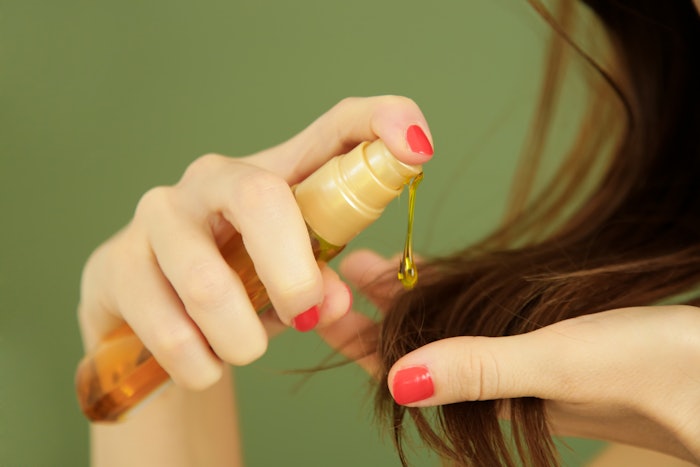
In 2023, the frequency of hair care product purchases surged worldwide. With the return of in-person activities post-COVID, home hair care and salon visits have once again become key parts of daily routines, now with a heightened focus on product quality.
This article is only available to registered users.
Log In to View the Full Article
In 2023, the frequency of hair care product purchases surged worldwide. With the return of in-person activities post-COVID, home hair care and salon visits have once again become key parts of daily routines, now with a heightened focus on product quality.
The recent expansion of e-commerce has brought professional-grade and performance-oriented products within easy reach of consumers, spurring a wave of premiumization.
Today, hair care is about more than hygiene; consumers are integrating more complexity into their routines, driven by both established preferences and emerging trends, expanding the frontier of traditionally consumed products.
Value Perception is at the Core of Hair Care Spending
In a world still grappling with rising inflation, it might seem natural to focus on discounts and competitively priced products for categories like hair care. However, an opposite trend is gaining traction: premiumization.
As inflation has increasingly become a global concern, consumers have developed strategies to optimize spending, scrutinizing prices and honing their perception of value.
Even as inflation eases, this more discerning approach persists, with consumers saving on products with a low recognized value while investing in items that offer clear benefits. This shift is redefining what constitutes value, and in this context, the hair care industry has successfully aligned price with perceived worth.
Hair Care Ingredients Power Value
Driving this success is a significant trend: ingredient-led beauty. Consumers are more informed than ever, comparing products online and in-store, reading user reviews, and receiving recommendations through AI platforms.
Amid this wealth of information, understanding ingredients has become a way of recognizing value, and the industry is already moving in this direction. The rise of skinification has become a powerful tool for demonstrating value.
Familiarity with ingredients and formulations has strengthened the concept and community of "skintellectuals," leading a shift toward greater transparency in the beauty industry. F-1. Most desired hair care features, 2019 versus 2023Euromonitor
F-1. Most desired hair care features, 2019 versus 2023Euromonitor
The Hair Benefits Shoppers Will Pay More For
The alignment between pricing and value perceived by customers doesn’t operate uniformly across all hair care products. Those with a stronger focus on hair and scalp health are best positioned to capitalize on this trend (F-1). Treatments, conditioners, shampoos, and heat protectants have particularly benefited. F-2. Hair care spending patterns across categories, 2020-2023Euromonitor
F-2. Hair care spending patterns across categories, 2020-2023Euromonitor
On the other hand, products more aligned with fashion trends and aesthetic appeal are seeing a more restrained path to premiumization. This can be seen in the more moderate price rises for hair color or dye and, above all, hair styling products (F-2).  F-3. Top hair care features consumers are seeking out (2023)Euromonitor
F-3. Top hair care features consumers are seeking out (2023)Euromonitor
Hair styling products are subject to constantly shifting fashion trends. From the sleek wet-hair look to the voluminous big-hair trend, consumers' preferences can shift rapidly.
This ultimately leads to a more measured pace of premiumization. An exception to this trend arises when complementary hair care categories—beyond shampoo and conditioner—tap into deeper aspects of identity and ancestry or connect with consumers' well-being in a more holistic way (F-3).
Hair Care as Self-care: Top Opportunities
Whether it’s about boosting self-confidence or enhancing a comprehensive home care regimen, hair care has taken center stage.
The pursuit of holistic well-being has become even more significant for consumers in recent years. Self-care extends beyond physical and mental health and is now more focused on supporting natural beauty. For the hair care market, this has resulted in an increased demand for products that align with this desire.
Proudly wearing one’s natural hair is part of a broader journey of self-acceptance and the desire to feel comfortable in one’s own skin. Hair has become a powerful expression of identity, playing a key role in daily self-care routines.  F-4. Product categories with stress relief claims, 2019 versus 2023.Euromonitor
F-4. Product categories with stress relief claims, 2019 versus 2023.Euromonitor
The “everything shower” trend—involving long, multi-step regimens—became a global sensation in 2023 and firmly established itself in 2024. These indulgent showers, featuring an array of products with strong sensory and fragrant appeal, have incorporated extensive hair care routines.
Traditional claims like hydration and anti-dandruff are no longer the main exclusive focus, giving way to benefits such as stress relief, reflecting the growing demand for relaxation within the beauty and personal care industry (F-4).
Unlocking Growth: The Impact of Ingredient-Led Innovations and Emerging Markets
Recent advancements to ingredient-led beauty will likely solidify a focus on hair care product performance in coming years. Conventionally, optimal results were associated with professional-grade products; however, the integration of more sophisticated formulations into mainstream brands is expected to heighten competition.
The rise of masstige products is a notable trend, particularly among everyday items with a focus on efficacy. Moving forward, simply streamlining formulations will no longer suffice; brands must embrace evidence-based, skin-health-centric and scientifically grounded approaches—particularly in hair care. F-5. Regional hair care growth forecast, 2023-2028Euromonitor
F-5. Regional hair care growth forecast, 2023-2028Euromonitor
Moreover, the freedom to embrace one's identity opens a new realm of hair textures, sizes and thicknesses.
At the same time, emerging geographies are gaining significant traction in the hair care industry. Between 2023 and 2028, regions that are anticipated to experience the most substantial growth are Latin America, the Middle East and Africa, unveiling a new universe of brand opportunities and trends (F-5).










